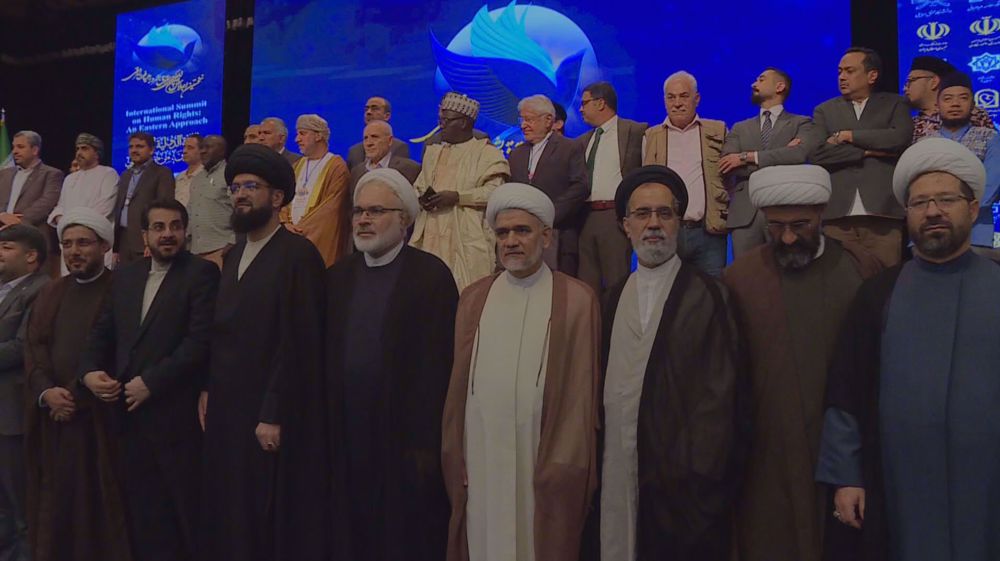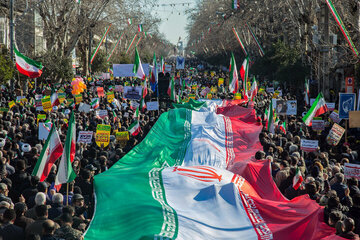Alwaght- After hemming and hawing and conflicting remarks about delivery of Russian Su-35 to Iran, in recent days officials reports were published about the deal, ending the speculations about this Russian-Iranian military deal. Iran’s Deputy Defense Minister Sayed Mahdi Farahi said that purchase of Su-35, Mil Mi-28 attack helicopters, and Yak-130 jet trainers has been finalized.
“The procurement process of these advanced military aircraft is being completed to ensure their integration into Iran’s defense arsenal, and this strategic addition is expected to significantly strengthen the country’s air combat readiness, he told Tasnim news agency.
For the first time, the purchase of Su-35 multirole aircraft from Russia was raised in mid-September last year. At that time, Brigadier General Hamid Vahedi, the commander of the Iranian Air Force, announced in a televised interview that the purchase of fighter jets from Russia is on the Air Force’s agenda.
At the time, regional and Western media reacted to the announcement. Forbes addressed the case, suggesting that procuring the new fighters will be a significant development for the Iranian Armed Forces. Actually, if this deal is realized, it will be the largest purchase of fighter jets by Iran in more than 30 years.
Also, in November last year, the Iranian purchase once again captured the attention, and the debate continued until Iran’s UN mission in March stated that “Iran has finalized the agreement to buy Su-35s from Russia. Su-35 fighters are technically acceptable to Iran, so after October 2020 and the end of Iran’s restrictions on the purchase of conventional weapons, Iran finalized the contract for their purchase. The mission however described the details of the deal as classified and so did not mention the precise number of fighter jets Iran is to receive.
According to media reports, these fighters were supposed to be delivered to the Egyptian Air Force under a contract signed between Russia and Egypt in 2019 worth $2 billion, but the US threats of sanctions dissuaded Cairo from completing the deal. Then, it was announced that these fighters will be delivered to Iran and that Iranian pilots were under training for operating these aircraft.
Iranian military officials have not specified the number of aircraft purchased from Russia, but according to Reuters, possibly 24 fighters could enter Iran soon. Although the details of this contract remain undisclosed by the authorities of the two countries, some unofficial sources said the contract is worth about $2 billion, namely the sum Russia had agreed upon with Egypt.
It is noteworthy that in recent years, the purchase of the Russian-made fighters by Iran has been discussed several times by the two sides, and though Iranian officials announced that the purchase and delivery have been finalized, the delivery several times was delayed. All arms sanctions on Iran were canceled by the UN in October this year, and Iran can buy weapons from abroad without any restrictions, and perhaps the sanctions were the main reason for the Russian procrastination.
Afraid of stepped-up Iranian-Russian cooperation, the Westerners try to stir up controversy around the deal and label it a threat to the international community. Rand Corporation, an American think tank, in an analysis on the growing cooperation of the two allies wrote: “Reportedly, Russia traded more than 60 Su-35 to Iran in exchange for several thousand drones that they are now using to terrorize Ukrainian civilians and disabling elements of Ukrainian critical infrastructure.” These Rand claims come while the Moscow-Tehran cooperation was not established after Ukraine war, and over the past decade, the two countries signed military deals, including the Su-35 procurement.
Su-35 capabilities
Su-35 is a single-seat highly agile multipurpose fighter with high maneuverability, designed as an air superiority fighter. It has the ability to perform a range of the most difficult maneuvers, including the Cobra maneuver, the Kulbit maneuver, Kvochur Bell maneuver, the tailslide maneuver, and the hook maneuver in the highest quality. Performing the Herbst maneuver is very basic for this jet which can also decelerate to zero and completely change direction in less than five seconds. The jet uses the very powerful N035 Irbis-E radar, also known as the Snow Leopard. This radar is capable of detecting air targets at a distance of 400 kilometers, can intercept 30 air targets at a distance of 300 kilometers, and engage 8 at the same time.
This multirole fighter also has capabilities including advanced integrated sensors, active electronic scanning, hyper-navigation flight, and hyper-maneuverability, and low radar cross-section. Therefore, the entry of such a fighter to Iran’s defense structure can greatly help strengthen the armed forces. According to some experts, the purchase of Su-35 fighter jets will facilitate the renewal of some of the capabilities of the Air Force and will probably make a basis for further cooperation in joint defense industries.
Boosting Moscow-Tehran military cooperation
In the past, Iran and Russia had signed contracts for delivery of S-300 air defense systems and Su-30 fighters. And now the delivery of the new jets will take the bilateral relations to next level.
In recent years, Moscow and Tehran have developed their cooperation on some key regional and international issues, including mutual political and military support for the Syrian government. The sanctions by Washington and its allies against the two countries have also strengthened economic cooperation and financial relations between the two allies, and their interactions are increasing day by day.
Su-35 deal comes as the world is witnessing global geopolitical changes and the bilateral ties are deepening. With the start of Ukraine war in February 2020, Moscow-Tehran military cooperation were strengthened, challenging the American warlike policies in the region. Therefore, this deal is part of a broader confrontation with the West and a Chinese-Russian-Iranian and other countries’ resolve to challenge the dollar empire through trade with national currencies. Over the past two years, the US expressed its worries about close Iranian-Russian cooperation and has done much to hamper their convergence. But the more it pushes towards this goal, the more it gets opposite results, something Russian Deputy Foreign Minister Sergei Ryabkov confirms. Ryabkov adds that Moscow places the technical-military cooperation with Iran on mutual interests and intends to seize the opportunity of end of United Nations Security Council restrictions on Iran’s missile program to bolster cooperation with Tehran.
Strengthening defense capabilities
The pre-Islamic Revolution Iran was equipped with only a number of operational first-generation American F-4 fighters. When the Islamic Revolution of 1979 ditched pro-Western monarchy in Iran and installed Islamic Republic, arms purchases from the US stopped. During the Saddam’s war on Iran in the early 1980s, Iranian armed forces used these jets. Over the past two decades that the strict Western sanctions banned any arms exports to Iran, Iranian military scientists took steps to strengthen the country’s defense basis. In 2018, a number of domestically-made Kowsar jets were produced for the Air Force.
In recent years, along with the development of missile and drone power, purchase of fighters from Russia was put on agenda to fill the void in the air area. Therefore, with the delivery of Su-35s along with the production of indigenous fighters and hypersonic missiles and drones, the deterrence power of the Islamic Republic will significantly increase in the region.
Iranian military expert Mohammad Hassan Sangtarash told Russian news agency Sputnik that this jet works effectively especially if armed with its main ammunition.
“The Sukhoi-35 can play the role of a combat mini-AWACS, or airborne early warning and control system), and if connected to Iran’s radar network, it will deliver a unique point defense capability. If Iran buys Russian technologies and starts joint mass production of the Sukhoi-35, it can gain a certain advantage over its neighbors’ fighters and warships,” the Iranian expert went on.
Having in mind that tensions between Iran and Israel have been on the rise in recent months, entry of these warplanes will add to Iran’s air capability against the Israeli air force and Tel Aviv will feel more weakness against Iran-led Axis of Resistance. Israeli Kan news network earlier reported that Su-35 fighters jet dramatically enhance Iran’s air capability. If this deal goes on, it went on, it would certainly mark an important progress in Iran’s capabilities, especially at a time Israel wants to prevent Iran from going nuclear. Also, an American military expert says that the delivery of Su-35s can really change the game.



























